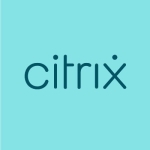The most valuable feature is manageability. From one control, I can manage and monitor my entire cluster.
Also, I like the Prism console of Nutanix.
There are two features, one is data protection that is in-built with Nutanix, and the other is that I can schedule my VM backups. I don't need to buy any third-party software for that. If I have the ESXi to Hyper-V, I need to have third-party software. But in Nutanix, I don't have to buy any third-party software, because I have the data protection feature.
The third and most important feature is LCM, Life Cycle Management. With one click, I can upgrade my firmware as well as my software version, and there will be no downtime required for that. It is seamless.
It's difficult to find something that needs improvement, for me, it's a perfect solution. I have not had any issues in the three years that I have been using it.
I was faced with one small problem, but I had the resolution immediately.
I don't see any issues with Hypervisor AHV.
No one is the best in the industry, and there is something in which they are neutral.
Currently, they have storage that is RS2 by default, and when I create one VM with the RA2 environment it will automatically create a second copy. My storage use is doubled; if I am creating a one TB virtual machine then my storage policy will take two TB from my cluster.
I need a second policy for that. For Dev and for Testing.
I don't need the backups. I am only doing R&D.
I need one feature, in that I can create one storage policy without any redundancy factor where when I create my 100 GB virtual machine or 100 GB workload, that only uses storage of 100 GB. I would prefer this because unnecessarily, my space is being utilized for creating a backup copy.
This feature I've got in ESXi, where I can define different policies for my storage and containers, is useful, but in Nutanix, there are only two policies, RS2 and RS3.
Last month, I completed a session with the Nutanix UI team where I provided feedback for the UI upgrades. This would be useful.
I have been using Nutanix AHV for more than three years.
I am upgrading the AHV version with LTS.
I have downloaded the two versions, one is LTS and the other is STS.
It is a stable solution. In the three years that have been using it, I have not had any issues.
It's a scalable solution.
You can upgrade it with one click because I have upgraded my cluster from a four-node cluster to a six node cluster. You can upgrade with one-click, and you don't need to provision a lot of things or plan a lot of things. You just need to identify it. You need the IP address and Nutanix Prism will do it automatically.
The Nutanix support team is very good.
If you Google the net promoter score, it is over 90. With VMware and Microsoft, the Net Promotor Score is 50, but their support is also good.
The initial setup was easy.
If you know basic English, and if you have an IT background, then you don't need to have any training for the implementation.
You just go through the portal, at nutanix.com. There is one EXE available, and you just need to download it on your laptop and just run. It will automatically discover your nodes and then you need only align the IP and your cluster is ready in about two to three hours.
I will recommend it because it is easy to manage, and you don't need to be skilled for that. You don't need any training at all. If you spend one or two days dedicated to Prism, you will get to know everything. This includes how to create VMs, how to manage storage, how to manage the client-server, how to monitor the entire cluster, and there are lots of algorithms available. this means that you don't need to configure things like a Hyper-V or ESXi.
I would rate this solution a nine out of ten.




















I am happy to tell you that since release 5.18 there is a way to get it done more conveniently: https://portal.nutanix.com/#pa... That is still not as easy as import directly like in vmware but it gets the job done